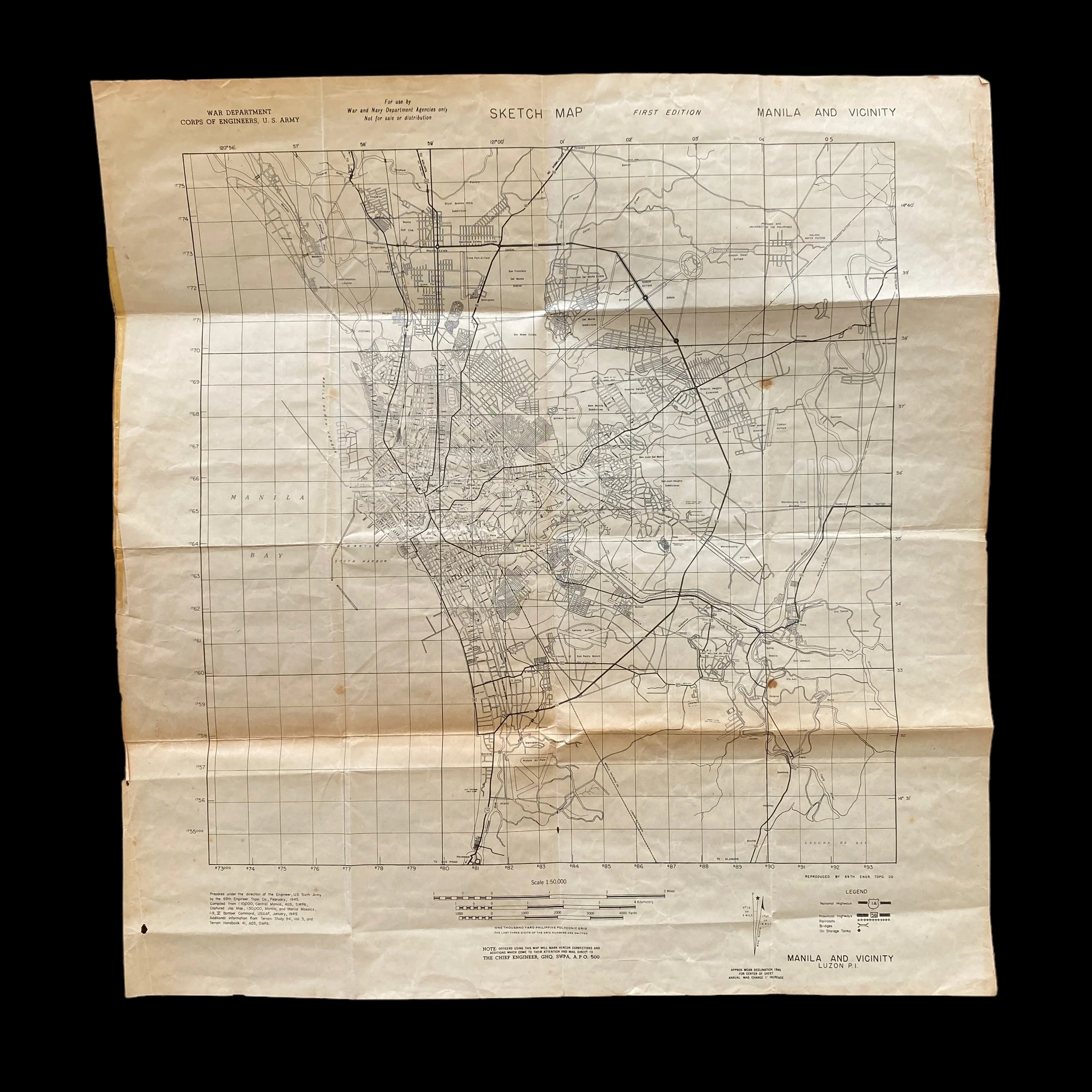WWII 1945 U.S. Liberation of Manila Luzon Landings Battle of Manila General Douglas MacArthur Pacific Theater Combat Operation Map




















WWII 1945 U.S. Liberation of Manila Luzon Landings Battle of Manila General Douglas MacArthur Pacific Theater Combat Operation Map
Comes with C.O.A.
This incredibly rare and museum-grade World War II map shows heavy combat wear and use. Dated 1945. This map is created by the U.S. Army for the liberation of Manila during World War II.
The 1945 U.S. Liberation of Manila was a critical battle in the Pacific Theater of World War II. The city of Manila, the capital of the Philippines, had been occupied by the Japanese since 1942, and the liberation of the city was a crucial objective for the Allied forces. General Douglas MacArthur, the Supreme Commander of Allied Forces in the Pacific, had promised to return to the Philippines, and the liberation of Manila was a crucial part of this campaign. The Battle of Manila was a brutal and destructive conflict that lasted for a month, but it resulted in the liberation of the city and the defeat of the Japanese forces in the Philippines.
In early 1945, the Allied forces had gained significant momentum in the Pacific Theater. The U.S. Navy and Army had successfully landed on Iwo Jima, and they were making significant gains in the Philippines. General MacArthur had devised a plan to liberate Manila, which involved a two-pronged attack. The first prong was an amphibious landing on the coast of Manila Bay, while the second prong was a ground assault from the north.
On January 9, 1945, the U.S. Sixth Army, under the command of General Walter Krueger, landed on the shores of Lingayen Gulf, 120 miles north of Manila. The landing was successful, and the American forces began to make their way south towards Manila. At the same time, the U.S. Eighth Army, under the command of General Robert Eichelberger, began a ground assault from the north.
The Japanese forces in the Philippines were heavily outnumbered, and they were unable to mount a significant defense against the Allied forces. However, they did put up a fierce resistance in Manila, which was the focal point of the battle. The Japanese had fortified the city with bunkers, tunnels, and pillboxes, and they had positioned themselves strategically throughout the city.
The Battle of Manila began on February 3, 1945, when the U.S. Army began its assault on the city. The fighting was intense, and the American soldiers faced significant resistance from the Japanese defenders. The Japanese had booby-trapped buildings, and they had dug trenches and tunnels throughout the city. The American soldiers had to clear each building and each street one by one, which resulted in heavy casualties.
The Battle of Manila was a brutal and destructive conflict. The Japanese defenders had no intention of surrendering, and they fought to the death. The American soldiers were forced to use flamethrowers and grenades to clear out the bunkers and pillboxes, which resulted in widespread destruction and civilian casualties. The Japanese had also destroyed many of the city's historic buildings and landmarks, including the Manila Cathedral and the University of Santo Tomas.
The Battle of Manila was a turning point in the Pacific Theater of World War II. The liberation of the city was a significant morale boost for the Allied forces, and it marked the beginning of the end of the Japanese occupation of the Philippines. However, the battle was also a significant human tragedy. It is estimated that over 100,000 civilians were killed during the battle, and much of the city was destroyed.
General Douglas MacArthur was heavily criticized for the handling of the Battle of Manila. Many historians believe that he should have waited for reinforcements before launching the assault on the city, which would have minimized the civilian casualties. However, MacArthur defended his decision, arguing that he wanted to liberate Manila as quickly as possible to avoid further civilian suffering.
In conclusion, the 1945 U.S. Liberation of Manila was a critical battle in the Pacific Theater of World War II. The battle was a turning point in the war, and it marked the beginning of the end of the Japanese occupation of the Philippines.